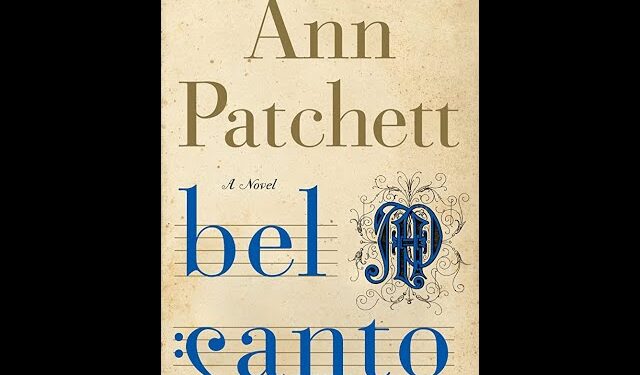Introduction
Bel Canto Summary And Themes By Ann Patchett Ann Patchett’s novel Bel Canto is a moving and complicated examination of interpersonal relationships, the influence of music, and the difficulties of cultural and individual identity. During a high-stakes hostage scenario, the drama takes place in an opulent home in a fictional Latin American nation. As people from different backgrounds are compelled to face the nature of their relationships, wants, and individual humanity, the novel skillfully interweaves themes of love, communication, and transformation.
A real-life terrorist hostage situation served as the inspiration for the narrative, but Patchett took artistic license to create a profoundly human tale. Bel Canto is also a meditation on how music can change people’s lives because an opera performance is crucial in changing the plot and the lives of its characters.
Patchett examines the brittleness of connections, the intricacy of identity, and the beauty of human resiliency through a combination of suspense and poetic storytelling. The book received accolades for its rich character development, emotional depth, and provocative examination of the relationships between politics, art, and personal development.
Summary of Bel Canto by Ann Patchett
The Setting and Introduction to the Hostage Situation:
A magnificent party at the home of Mr. Hosokawa, a wealthy entrepreneur in a fictional South American nation, opens the book. The evening’s high point is a private concert by renowned American soprano Roxane Coss, but Mr. Hosokawa, a reclusive Japanese tycoon, is in the nation to clinch a deal for a new facility. She is flown in specifically to perform for the private party’s guests. The host, his staff, ambassadors, and business titans are among the invited guests, who have come to enjoy a magnificent music evening.
Read more
But when a bunch of armed terrorists who belong to a revolutionary faction invade the house and hold the guests prisoner, the evening takes a drastic turn. The terrorists are members of an organization that wants to draw attention to their cause and pressure the government into making political concessions. Regretfully, the organization has made a mistake and the administration has not promptly engaged in negotiations with the terrorists. Months pass during the hostage scenario, and what at first seems to be a short-lived political stunt turns into a convoluted social experiment in which the lines between captor and captive start to blur.

The Characters:
- Roxane Coss: The renowned opera singer is the central figure of the story. Her stunning voice, which captivated the wealthy elite at the beginning of the novel, continues to have a profound impact on the hostages and even the terrorists. Roxane, whose beauty and fame are both her gift and her burden, develops meaningful relationships with the hostages over the course of the crisis.
- Mr. Hosokawa: A Japanese businessman who is deeply in awe of Roxane’s voice. Mr. Hosokawa is not particularly interested in the politics of the situation, but he is slowly drawn into the lives of the hostages and terrorists during the standoff. His love for Roxane becomes one of the most poignant subplots of the novel.
- The Terrorists: The group of young men and women who have taken the guests hostage are portrayed not as faceless villains, but as individuals with their own stories, motivations, and vulnerabilities. As the story progresses, the lines between good and evil become more ambiguous, with several of the terrorists developing human connections with the hostages.
- Gen: A translator who speaks both Spanish and Japanese, Gen becomes a crucial figure in bridging the communication gap between the hostages and the terrorists. His character also provides insight into how language and understanding can facilitate human connections, even in dire circumstances.
The Relationship Between Hostages and Terrorists:
The hostage situation changes from one of tension and animosity to something far more complex as the weeks and months pass. Despite their disparate situations, the hostages and terrorists start to develop intricate bonds. The hostages’ opera performances offer brief respites from their situation, and Roxane’s singing offers beauty and comfort in a chaotic world.
Initially motivated by political objectives, the terrorists gradually start to doubt the reasoning for their acts. The walls between the prisoners and their captors begin to dissolve as they converse, eat, and listen to music together. The strength of Roxane’s music also has an impact on the terrorists, and for many of them, the opera performances are experiences that change people. A few of the terrorists, such as César, even start to develop romantic feelings for Roxane.
The Passage of Time and Changing Dynamics:
Over time, the situation becomes increasingly surreal. The hostages, initially scared and uncertain of their fate, adapt to the new dynamics of their captivity. They form unexpected alliances, and many begin to view their captors not as enemies but as people caught in a larger political struggle. These shifting dynamics are further complicated by personal relationships and unspoken desires. Mr. Hosokawa, for instance, falls in love with Roxane, even though she seems completely absorbed in her own emotional struggles and the complexities of her situation.
Read more
At the same time, the terrorists, realizing that they are not receiving the immediate attention or concessions they had hoped for, become increasingly disillusioned with their cause. The transformation of their identities becomes as important as that of the hostages. The humans on both sides of the conflict are revealed to be equally vulnerable, flawed, and capable of great compassion.
The Ending:
At the story’s conclusion, an unexpected intervention breaks the political impasse between the hostages and their captors. Although the hostage situation’s resolution is terrible, it provides a moving commentary on the effects of violence, the influence of music, and the intricate web of interpersonal ties. Since some characters are able to find peace while others are left to deal with the wounds of their experiences, the novel closes with a sense of bittersweet resolve.
Themes of Bel Canto
- The Power of Music: The central theme of Bel Canto is the transformative power of music. Throughout the novel, Roxane’s singing has a profound effect on everyone who hears it—hostages, terrorists, diplomats, and servants alike. Music transcends language and cultural barriers, creating a common bond between the characters who would otherwise have nothing in common. It allows for emotional expression, healing, and connection in a context where communication seems impossible. In this way, Patchett shows how art—particularly music—can serve as a universal language that connects people in unexpected and deeply moving ways.
- Communication and Miscommunication: Bel Canto examines the complexities of communication and the difficulties inherent in understanding each other across cultural, linguistic, and personal divides. Gen, the translator, plays an essential role in facilitating communication between the hostages and the terrorists, but even he struggles to fully understand the deeper emotions at play. The novel suggests that, while language can bridge many gaps, there are still barriers—emotional, psychological, and cultural—that are harder to overcome.
- Identity and Transformation: Throughout the novel, characters experience profound transformations in their identities, not only because of the political situation but because of the relationships they form with one another. The terrorists evolve as they interact with the hostages, and the hostages likewise undergo personal growth as they learn to navigate their captors’ complex emotions. The novel suggests that identity is fluid, and it is shaped by the experiences and relationships that individuals encounter in their lives.

- The Nature of Violence and Politics: The novel critiques the use of violence as a means of achieving political goals. While the terrorists initially take the hostages in an attempt to secure political change, their actions soon lose their focus, and their motivations become more muddled. The narrative does not glorify terrorism or its political goals but instead emphasizes the humanity of those involved, showing how violence can lead to unintended consequences and how individuals on both sides of a conflict are often victims of larger forces.
- Love and Human Connection: Bel Canto portrays the emergence of love in unexpected places. The relationships that form during the hostage crisis are complex and nuanced. Mr. Hosokawa’s love for Roxane, César’s unrequited love for her, and the quiet, shared affection between other characters illustrate how love can flourish even in the most trying circumstances. Love is not just romantic but also platonic and deeply emotional, connecting characters in ways that defy logic or explanation.
Read more
FAQ
1. What is the significance of Roxane’s singing in the novel?
Roxane’s singing is a central symbol in the novel, representing the power of art to bring people together and provide emotional healing. Her voice transcends cultural and linguistic barriers, allowing characters from vastly different backgrounds to connect. Her music becomes a source of solace for both the hostages and the terrorists, and it ultimately plays a role in transforming the nature of their relationships.
2. Why do the terrorists change their attitudes over time?
The terrorists, initially motivated by political goals, begin to question their mission as the hostage situation drags on. Through their interactions with the hostages and the transformative effect of Roxane’s music, they start to see their captives as human beings rather than mere political pawns. Their motivations become less clear as they develop personal relationships and emotional attachments, which complicates their original objectives.
3. How does Bel Canto address the theme of communication?
Communication, both verbal and non-verbal, is a key theme in Bel Canto. The novel shows how language can be both a bridge and a barrier between people. While the characters come from different cultural backgrounds and speak different languages, their shared experiences, emotions, and love of music allow them to communicate on a deeper, more emotional level. This theme also highlights how miscommunication and misunderstanding can shape relationships in complex ways.
4. What role does identity play in Bel Canto?
Identity is fluid in Bel Canto, and many characters experience a shift in how they see themselves and how they relate to others. The hostage situation forces everyone to re-examine their lives, beliefs, and personal motivations. The novel suggests that identity is shaped by experiences and relationships, and it can evolve in ways that characters may not expect.
5. Is Bel Canto a commentary on politics?
While Bel Canto is not overtly political, it offers a subtle critique of the use of violence to achieve political aims. The novel shows how political motivations can be muddied by personal relationships and emotions, and it questions the efficacy of violence as a means of social change. The story humanizes both the terrorists and the hostages, revealing how politics is often driven by complex personal forces rather than clear-cut ideologies.
6. What is the significance of the novel’s ending?
The ending of Bel Canto is bittersweet, offering a resolution to the hostage crisis but also leaving some characters with unresolved emotional and psychological scars. It underscores the themes of love, loss, and the lasting impact of human connections. The conclusion is a reminder of the fleeting nature of human experiences and the way art and music can offer solace in the face of tragedy.
Read more

















